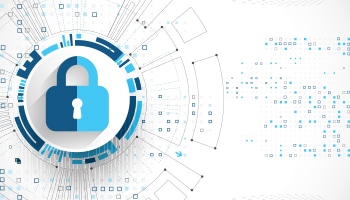“In this world, nothing can be said to be certain, except death and taxes.”
Benjamin Franklin
You’ve probably heard this famous quote before. When it comes to running a modern-day organization, built upon a complex infrastructure, the only certain thing is there will be a point when your system may go down. Infrastructure failures, human errors, security breaches, and natural disasters happen and they can inevitably lead to unaffordable business interruption and downtime.
While there isn’t much to be done about Ben Franklin’s two certain things, in business, the best way to ensure your company is prepared for anything is to have business continuity and disaster recovery plans in place. Even though these terms are often used interchangeably, there are notable differences between the two, so it’s critical to have both plans in place to mitigate the impact on business operations.
In this article, we will take a deep look at both plans, what makes them different, and why you should think of implementing them in your organization.
Let’s begin!
Business Continuity Plan (BCP)
The business continuity plan describes how a business will continue to operate in the event of an unplanned disruption in services. Unlike a disaster recovery plan, BCP is more comprehensive and contains contingencies for business processes, assets, human resources, and business partners – in other words, every aspect of the business that might be affected.
An organization’s business continuity plan identifies which processes can be maintained in the event of a disaster, and which ones must be modified. It’s crucial for the plan to be easily understandable by all departments within an organization, especially the information regarding where data is stored, what applications are in use, who stores the data, and who has access to it.
A well-developed plan makes it easier for everyone in the organization to know how to respond in the unfortunate event of a disaster. Furthermore, the business continuity plan allows you to prioritize what’s really important – for instance, losing your email service is less important than losing customer data necessary to process an order or payment.
Although important, last year research from Mercer concluded that 51% of businesses did not have a business continuity plan in place to combat a global emergency, such as Covid-19. Due to this lack of planning, many organizations suffered revenue losses, faced unexpected expenditures to support a remote workforce, or lost market share to their better-prepared competitors.
According to another study, conducted by IDC, on average, an infrastructure failure can cost USD $100,000 an hour and a critical application failure can cost USD $500,000 to USD $1 million per hour.
Put simply, it’s worth the time to sit down and create a comprehensive business continuity plan that can help your organization identify and prepare for various unpleasant scenarios.
Disaster Recovery Plan
A disaster recovery plan is an integral part of the business continuity plan. It is created by an organization and contains detailed instructions on how to respond to unplanned incidents such as natural disasters, power outages, cyber-attacks, and any other disruptive events. A disaster recovery plan helps an organization minimize the impact of a disaster, resuming vital operations quickly or continuing to operate as if nothing had happened.
A disaster recovery plan is more focused than a business continuity plan, and it may not address all contingencies involving business processes, assets, people, and business partners. The key reasons why a business would want a detailed and tested disaster recovery plan include:
- Minimizing disruptions to normal operations
- Limiting the extent of disruption and damage
- Minimizing the financial impact of the interruption
- Establishing alternative methods of operation in advance
- Preparing personnel for emergency procedures in advanc
- Ensuring a smooth and rapid restoration of service
The process of developing a comprehensive disaster recovery plan involves careful consideration of all aspects of the business’s core operations. While you can try to do it yourself, there are more than enough Managed Service Providers which offer professional disaster recovery solutions.
Enterprise-Grade Disaster Recovery Solution from CloudScale365
When it comes to the security of your business, it’s important to rely on specialists with a proven track record.
At CloudScale365, we’ll build custom Disaster Recovery solutions, according to your business continuity plan. With RPO, RTO, secondary site location, failover, and failback options, we will create a tailor-made solution to match your business needs.
Our agile and flexible approach to implementing the right DR solution for your business will protect you from lengthy downtime. We have an established four-step system for building you the best solution for your company:
- Design your custom Disaster Recovery plan, including recovery Point Objective (RPO) and RTO (Recovery Time Objective) requirements;
- Configure your data replication, backup, and recovery services according to the plan;
- Test and verify that data replication and backup to offsite locations, and recovery processes operate as expected;
- Respond, in the case of a disaster or expected service disruption to ensure that services are restored within the required RTO.
Our experts will guide you in every step of the journey towards architecting the perfect DR solution!






